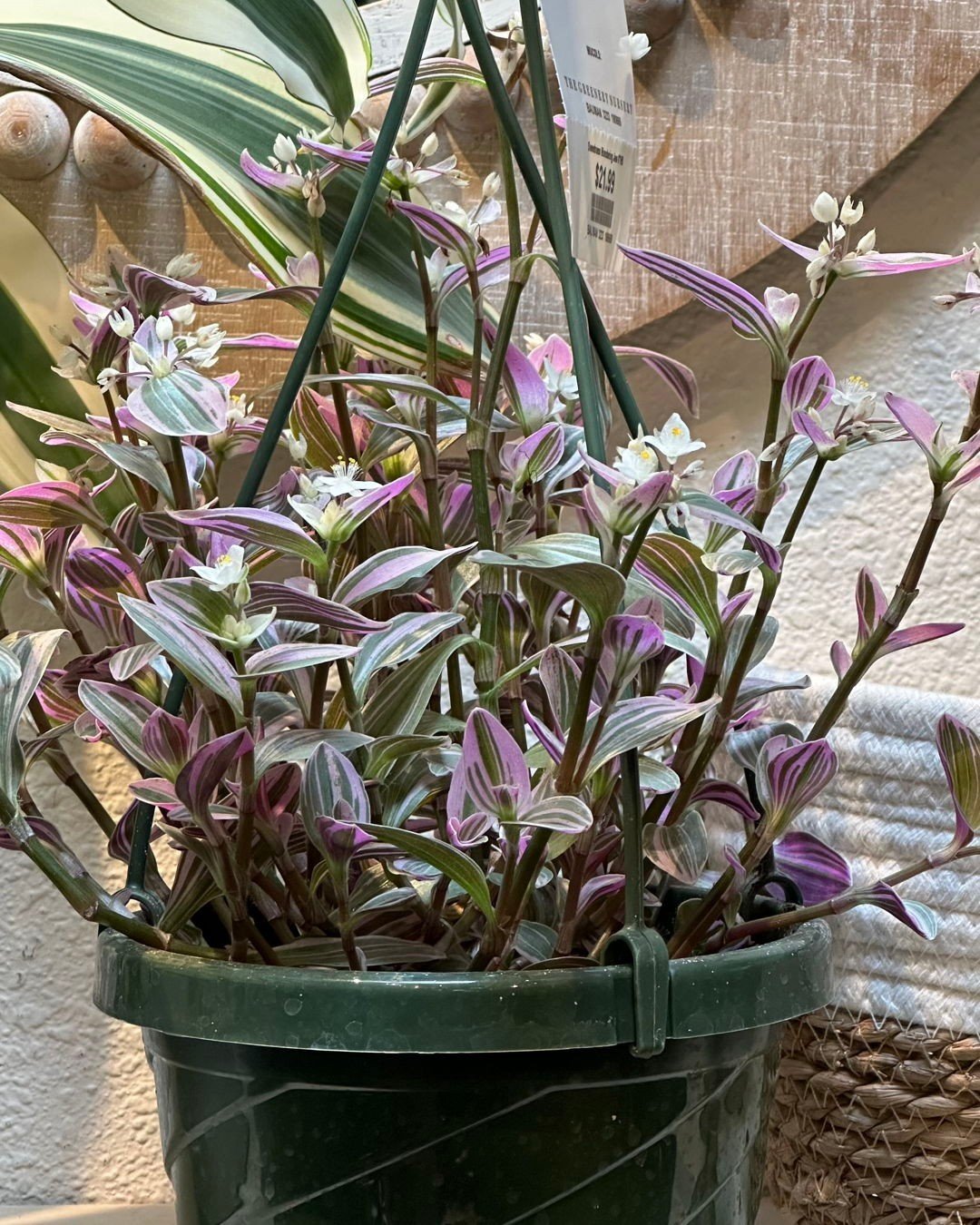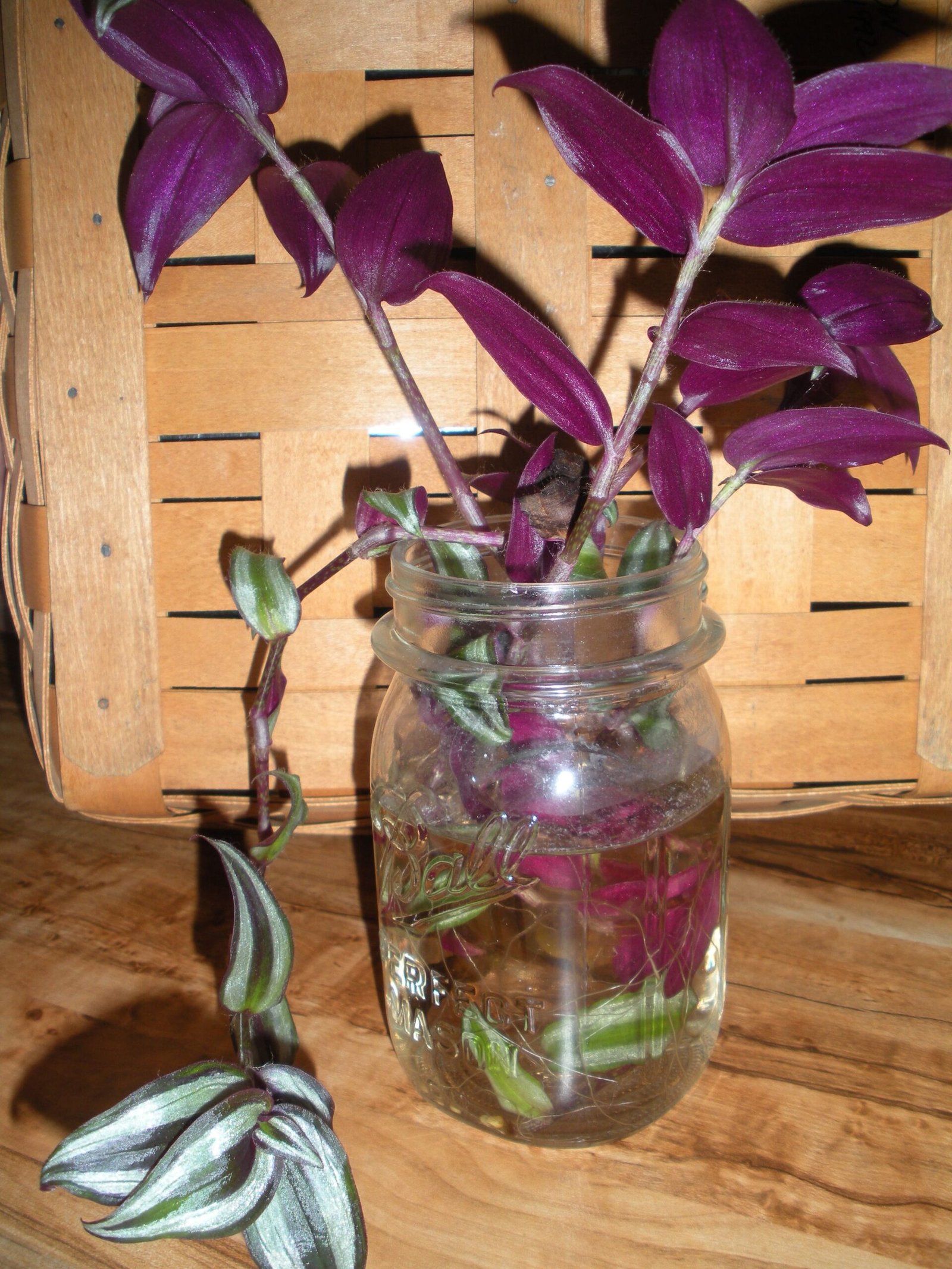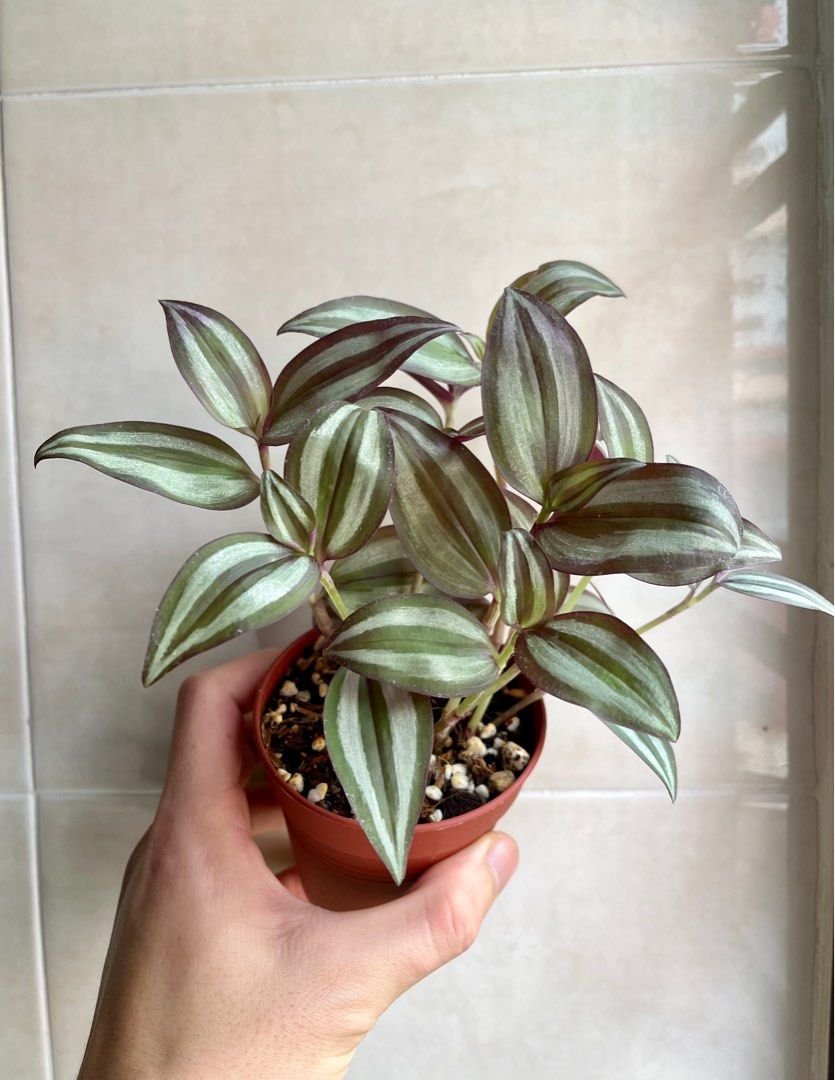Discover the captivating world of the Wandering Jew plant with this comprehensive guide. From propagation techniques to care essentials, uncover valuable insights to ensure your vibrant trailing vines thrive indoors and out, adding a touch of lush greenery to your living spaces.
The Wandering Jew, scientifically known as Tradescantia, is a beloved houseplant renowned for its vibrant foliage and trailing vines. With its easy-going nature and adaptability, this charming plant has found its way into countless homes and gardens worldwide. Whether you’re a seasoned plant parent or a budding enthusiast, this guide will equip you with the knowledge and skills to cultivate and care for your Wandering Jew, ensuring it flourishes and adds a touch of natural beauty to your surroundings.
Here’s a detailed information chart for the Wandering Jew plant:
| Aspect | Details |
|---|---|
| Botanical Name | Tradescantia zebrina (commonly), Tradescantia fluminensis, Tradescantia pallida |
| Common Names | Wandering Jew, Inch Plant |
| Plant Type | Perennial trailing plant |
| Zones | USDA Zones 9-11 (can be grown as a houseplant in cooler zones) |
| Exposure | Bright, indirect light to partial shade |
| Bloom Time | Spring to summer |
| Height/Spread | 6-12 inches tall, spreads/trails 1-2 feet or more |
Understanding the Wandering Jew

Before delving into the care and cultivation of this remarkable plant, let’s explore its origins and unique characteristics:
- The Name: Despite its intriguing name, the Wandering Jew has no direct connection to the Jewish faith or culture. The moniker is believed to have originated from its propensity to spread and propagate easily, much like the nomadic lifestyle of the Jewish diaspora.
- Botanical Background: The Wandering Jew belongs to the Commelinaceae family and is native to the tropical and subtropical regions of the Americas. It boasts a diverse array of species and cultivars, each displaying unique foliage colors and patterns.
- Growth Habits: This plant is renowned for its trailing stems and vibrant foliage, which can range from shades of green, purple, pink, and white, often adorned with striking stripes or patterns. Its vines can grow up to several feet long, making it a perfect choice for hanging baskets or as a groundcover.
Propagation Techniques

One of the most appealing aspects of the Wandering Jew is its ease of propagation. Whether you’re looking to expand your collection or share this plant with others, there are several methods to choose from:
- Stem Cuttings: This is perhaps the most common and straightforward method. Simply snip off a healthy stem section, remove the bottom leaves, and place it in a well-draining potting mix or water. With proper care, roots will soon emerge, and you’ll have a new Wandering Jew plant to enjoy.
- Division: For established plants, division is an excellent way to create new specimens. Gently remove the plant from its container, separate the root ball into sections, and replant each division in its own pot or desired location.
- Seeds: While less common, some Wandering Jew varieties can be propagated from seeds. If you have access to viable seeds, sow them in a well-draining potting mix, keep the soil moist, and provide warmth and humidity until germination occurs.
Indoor Care and Cultivation

The Wandering Jew is a popular choice for indoor gardening due to its low-maintenance nature and ability to thrive in various conditions. Here are some essential care tips to ensure your plant flourishes indoors:
- Light Requirements: While the Wandering Jew can tolerate low-light conditions, it will produce its most vibrant foliage when provided with bright, indirect sunlight. Rotate the plant regularly to ensure even growth and prevent legginess.
- Watering Needs: Maintain consistently moist, but not waterlogged, soil for your Wandering Jew. Allow the top inch or two of soil to dry out before watering thoroughly. Adjust watering frequency based on your home’s humidity levels and the plant’s growth rate.
- Humidity and Temperature: The Wandering Jew prefers moderate to high humidity levels, making it an excellent choice for bathrooms or kitchens. Keep temperatures between 65°F and 80°F (18°C to 27°C) for optimal growth.
- Pruning and Grooming: Regular pruning encourages bushier growth and keeps your Wandering Jew looking tidy. Remove any damaged or discolored leaves and trim back overgrown vines to maintain the desired shape.
- Potting and Repotting: Choose a well-draining potting mix and a container with ample drainage holes. Repot your Wandering Jew annually or when it outgrows its current pot, providing fresh soil and a larger container for continued growth.
Outdoor Cultivation

While the Wandering Jew thrives indoors, it can also be grown outdoors in suitable climates. Here are some tips for successful outdoor cultivation:
- Planting Location: Choose a partially shaded area with well-draining soil. The Wandering Jew can tolerate full sun in cooler regions but may require afternoon shade in hotter climates.
- Soil Preparation: Amend the planting area with compost or well-rotted manure to improve soil structure and drainage. The Wandering Jew prefers slightly acidic to neutral soil with a pH range of 6.0 to 7.0.
- Watering: Provide consistent moisture during the growing season, but avoid overwatering, as the Wandering Jew is susceptible to root rot. Mulching can help retain soil moisture and suppress weed growth.
- Fertilization: Apply a balanced, water-soluble fertilizer every four to six weeks during the active growing season to promote lush growth and vibrant foliage.
- Winter Protection: In colder regions, protect your outdoor Wandering Jew plants by mulching heavily or considering bringing them indoors during the winter months.
Pest and Disease Management

Like any plant, the Wandering Jew can be susceptible to pests and diseases if not properly cared for. Here are some common issues to watch out for and how to address them:
- Mealybugs and Aphids: These sap-sucking insects can infest the Wandering Jew, leading to stunted growth and discolored foliage. Treat infestations with insecticidal soap or neem oil, and isolate affected plants to prevent the spread.
- Root Rot: Overwatering or poor drainage can lead to root rot, causing yellowing leaves, wilting, and eventual plant death. Improve drainage and allow the soil to dry out between waterings.
- Leaf Spots and Mildew: Fungal diseases can cause unsightly spots or powdery growth on the leaves. Increase air circulation, avoid overhead watering, and consider using a fungicide if the issue persists.
- Spider Mites: These tiny pests can cause yellowing, stippling, and webbing on the leaves. Treat with insecticidal soap or neem oil, and maintain proper humidity levels to discourage infestations.
Varieties and Cultivars

The Wandering Jew plant family boasts a diverse array of cultivars, each with its own unique foliage colors and patterns. Here are some popular choices to consider:
- Tradescantia zebrina: Also known as the Wandering Jew or Inch Plant, this classic variety features green leaves with distinct purple or silver stripes.
- Tradescantia pallida: The Purple Heart or Purple Queen cultivar showcases deep purple foliage with lighter stripes, making it a stunning addition to any collection.
- Tradescantia fluminensis: The White Velvet variety boasts green leaves with distinctive white stripes, creating a striking contrast.
- Tradescantia sillamontana: The Striped Wandering Jew features vibrant pink, white, and green striped leaves, adding a burst of color to any space.
- Tradescantia spathacea: The Oyster Plant or Moses-in-the-Cradle cultivar displays unique boat-shaped bracts that enclose small white flowers, making it a fascinating addition for plant enthusiasts.
The Wandering Jew is a true gem in the world of houseplants, offering not only visual appeal but also ease of care and propagation. By following the guidelines outlined in this comprehensive guide, you’ll be equipped with the knowledge and skills to cultivate and nurture your own vibrant Wandering Jew plants, whether indoors or outdoors. Embrace the joy of gardening, and let these captivating trailing vines add a touch of natural beauty to your living spaces, while providing a sense of accomplishment and connection with the natural world.
Pingback: Wandering Jew: Complete Guide to Plant Care and...
Pingback: Nerve Plant: A Comprehensive Care Guide -
Pingback: Bridal Veil Plant : How to Grow This Beautiful Flowering Houseplant